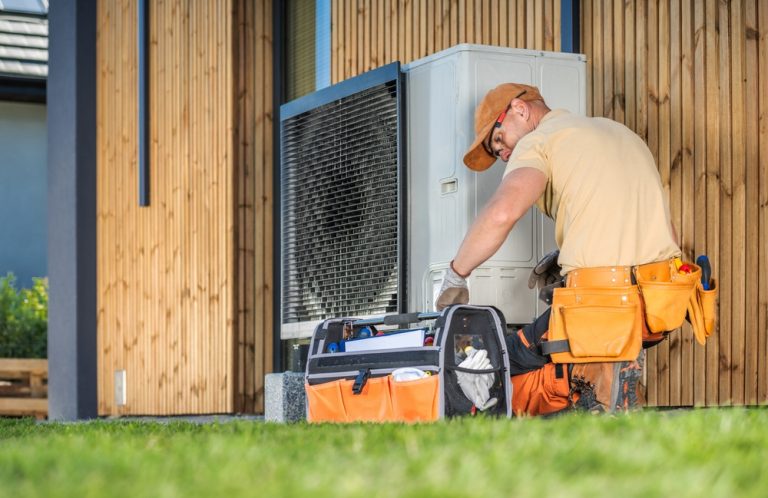Save Money on Air Conditioning Costs!
It’s quite possible to keep your home cool and comfortable this summer without necessarily causing your electric bill to overheat above the norm. The reality is, air conditioning is one of the biggest energy consumers in any household. Almost 90 percent of American homes have their own air conditioners, and AC units typically consume a staggering six percent of all the electricity made in the United States. This intensive usage costs homeowners somewhere around $29 billion annually, according to U.S. Department of Energy (DOE) reports. This figure highlights not just a financial burden but also a significant environmental one, making energy conservation more important than ever.
U.S. households are also expected to spend around $176 per month on electricity bills over June, July, and August 2023, according to the U.S. Energy Information Administration (EIA). This is a national average, and in hotter climates, that figure can easily double. Moreover, a big chunk of that might go toward running the AC as temperatures tend to soar during the summer months. This seasonal spike in energy consumption puts a strain on both personal finances and the nation’s power infrastructure, making savvy energy use a critical skill for modern homeowners.
Air conditioning accounts for around 12% of monthly power bills on average across the country, and as much as 27 percent in hot, humid states like Florida or Louisiana. In these regions, the combination of high heat and moisture means the AC unit has to work overtime not just to cool the air but also to dehumidify it, which is an extremely energy-intensive process. For many families, this can be the single largest variable expense in their summer budget.
However, the bad news is that summers are more likely to get hotter as time goes by, not cooler. Climate change is definitely placing a huge and growing burden on our electrical grids, according to the Environmental Protection Agency, and this trend is further expected to expand. This increased demand during peak heat can lead to brownouts or blackouts, making the grid less reliable when we need it most.
The result might be an 8 to 13 percent increase in energy demand from air conditioning usage in the next ten years, as the American Geophysical Union predicts. To cope with this surging demand, there are plenty of utility companies that constantly raise their rates in the summer. They often implement “peak pricing” models, charging significantly more for electricity used during the hot afternoon hours when demand is highest across the board.
This year, Americans are expected to spend around 2% more, on average, on their monthly electricity bill, as the EIA predicts. While that may not sound like much, it adds up quickly over a long, hot summer. The good news is that there are always other ways to cut the cost of cooling your home without actually busting your budget or even wiping out your savings. By adopting a few smart habits and making some strategic home improvements, you can take control of your energy consumption. Here are some of the best ways in which you can save money on your air conditioning and electric bills.

Throw a bit of shade around the house.
I know it might seem redundant, but in reality, planting leafy trees and creating shade around your home might help block the sun and keep your house cooler in a very significant way. This is one of the most effective and aesthetically pleasing long-term strategies for passive cooling. Most heat that accumulates inside any house comes right from the sun shining onto the roof or even through the windows and heating the house directly through a process called solar gain.
For maximum effectiveness, you should plant tall trees on the south side of the property to block the high summer sun, and broad, dense trees to the west and east to block the intense, low-angled afternoon and morning sun. Moreover, if you have a large window that’s facing east or west, you will get a lot of sun in the morning and afternoon and plenty of solar rays coming from low in the sky. It’s worth taking into consideration planting deciduous trees, which lose their leaves in the winter, allowing the sun to warm your home during the colder months. Don’t forget other shade structures like awnings, pergolas, and strategically placed trellises with climbing vines.
Cover the windows.
As a general rule, around 30 percent of a home’s heating or even cooling energy is mainly lost through windows, making them a critical area to address. During the summer, a staggering 76 percent of the sunlight that falls on standard double-pane windows enters to become heat. To combat this, you can use solar screens, or even mesh-like window screens, which can easily intercept the solar energy right before it gets into the house. In addition to screens, consider using blackout curtains, which have an insulating layer, or light-colored blinds that can be adjusted to reflect sunlight upwards and away from the room.
Window screens are especially effective on east- and west-facing windows, which receive the most direct and intense sun during the day. If you are able to install them on the outside, that’s the way to do it. Exterior shading is always more effective than interior shading. This would also stop solar energy before it completely goes through the glass, preventing the glass itself from heating up and radiating warmth into your home.
It’s much better than anything you could do on the inside, as interior blinds or curtains still allow heat to enter through the window glass. Window films are yet another money-saving option that has become increasingly popular. They are often metalized or ceramic sheets that reflect heat even before it gets transmitted through glass. These films are available in various tints and reflectivity levels. If you can use something white or silver, or something that’s quite reflective, it will stop a significant amount of heat from getting through the glass without completely blocking your view.
Get smart about the thermostat.
If you haven’t done it already, it could be the right time to switch to a programmable or even a smart thermostat that can be easily set to adjust the temperature in your home depending on the hours of the day. This simple upgrade is one of the most impactful changes you can make, moving you from manual adjustments to an automated, energy-saving schedule. A basic programmable thermostat lets you set different temperatures for weekdays, weekends, and when you are away.
Smart thermostats take this a step further and might enable you to keep a comfortable temperature in your home with even greater efficiency, and moreover, most of them can be operated remotely from your telephone. Many models learn your daily routines and adjust the temperature automatically. Some even use geofencing to detect when you’ve left the house and will then switch to an energy-saving mode. They generally cost around $150 to $300, but many utility companies offer rebates that can significantly lower the initial price, making the return on investment even faster.
You can keep your programmable thermostat set as high as you feel comfortable. When you’re away, you can set the temperature even higher. By following this practice, you will trim as much as 10% of your energy bill by setting your thermostat 7 to 10 degrees higher for eight hours a day, such as when you’re at work or asleep. The key is to cool people, not the empty house. If you don’t have a thermostat, here’s one that will change your life – for the better!

Install ceiling fans.
If you can, run ceiling fans on your home’s upper level, then open the windows on the lower level. This helps create a natural convection current, pulling cooler air in from below and pushing hot air out from above. For instance, if you live in a one-story house or apartment, you can close the windows near the fan and open the windows in rooms far away from the fan, preferably on your home’s windward side, to create a cross-breeze.
The whole idea is to circulate the air inside the house to create a cooling ‘wind-chill’ effect on your skin. This effect doesn’t lower the room’s temperature, but it makes you feel cooler. If you run a ceiling fan, you can easily raise your thermostat setting by 4 degrees without needing to compromise your comfort level. During summertime, you can run ceiling fans in a counterclockwise direction to push cool air down, then turn off the fans when you leave a room, as they cool people, not spaces. Also, ensure your fan is properly sized for the room for maximum efficiency.
Service the AC
In all fairness, it’s an upfront investment—and not necessarily a glamorous one. However, keeping up with routine maintenance on your air conditioning unit might help reduce its energy consumption and prevent costly breakdowns during the hottest days of the year. Think of it as preventative care for one of your home’s most expensive appliances. A well-maintained unit runs smoother, quieter, and more efficiently.
In fact, you would be surprised to know that clean filters alone can trim your unit’s energy use by 5 to 15 percent, according to the U.S. Department of Energy. This is one of the easiest and most impactful DIY maintenance tasks. Filters might need more frequent cleaning or replacing—as often as once a month—especially if there’s plenty of dust from furry pets, or if you live in a particularly dusty or polluted area.
A clogged or dirty filter blocks airflow, forcing the fan motor to work harder and reducing the efficiency of the unit. The coils in the evaporator and condenser might collect a lot of dirt as well, which insulates them and impedes their ability to transfer heat. They also need periodic cleaning, typically once a year by a professional. Additionally, ensure the outdoor condenser unit is free of debris like leaves, grass clippings, and dirt, as this can severely restrict airflow.
Go with a state-of-the-art cooling system.
If your AC system is old, particularly over 10-15 years, chances are it will be less efficient and break down more often. Modern units are significantly more efficient than their predecessors. You can cut your energy costs by swapping an old air conditioner for a brand new unit with a high energy-efficiency ratio, also known as EER, or a high Seasonal Energy Efficiency Ratio (SEER), which is found on any Energy Star-qualified unit.
Energy Star is the main system used by the U.S. government to designate energy-efficient products. In fact, the higher the rating, the better the system. For central air conditioners, look for a SEER rating of 15 or higher. While a high-SEER unit may have a higher initial cost, the long-term energy savings can often pay for the difference over the unit’s lifespan. It’s worth taking into consideration the climate you live in before buying an air-conditioning system.
For instance, evaporative coolers, sometimes called swamp coolers, might be more economical than central AC units, but they aren’t suited for humid climates such as Florida because they work by adding moisture to the air. However, they work very well in hot, dry places like Arizona. Other modern, efficient options include ductless mini-split systems, which allow for zoned cooling and avoid energy losses associated with ductwork, and geothermal heat pumps, which use the stable temperature of the earth to cool your home with incredible efficiency.
Seal the leaks.
A drafty house is not an energy-efficient house. Every small crack and gap acts as an open invitation for hot summer air to infiltrate your cooled home, and for your expensive cold air to escape. You can do a visual check inside and outside the home and search for gaps, cracks, and openings where air might come and go. Simple fixes with caulk or weatherstripping can make a huge difference.
Windows and doors are, naturally, the most obvious places you should check, but there are still many other areas that are prone to leaks, like where the home’s foundation meets the exterior brick and siding, as well as openings for pipes, vents, and electrical wiring. For a complete assessment of your property, you should hire a professional technician for an energy audit. They can perform a blower-door test to pressurize your home and pinpoint exactly where the most significant leaks are located.
Avoid using your stove and oven.
I know you might think your air conditioner just has to strain on hot days, but it can be forced to do way more work when you create heat inside the home as well. That also includes using major appliances such as your stove or oven, which can raise the temperature in your kitchen by several degrees, forcing your AC to run longer and harder to compensate.
Consider using them at night, when the temperature is cooler. If possible, you might even consider building an outdoor kitchen or simply using your backyard grill more often. It might use energy, but it won’t contribute to your air conditioner working every time. Other great alternatives include using a microwave, a toaster oven, a slow cooker, or an electric pressure cooker, all of which generate significantly less ambient heat than a full-sized oven.
Head for the basement.
It’s commonly known that heat rises. So it also makes a lot of sense to camp out in the basement, if you even have one. Basements stay naturally cooler because they are surrounded by earth, which maintains a relatively stable temperature year-round. This geothermal cooling effect can make your basement a refreshing oasis during a heatwave. Consider setting up a summer family room or recreation area in the basement to take advantage of this natural cool zone.
Just make sure you don’t open the basement windows when it’s humid because warm and moist air might cause condensation on cool surfaces, like basement walls, which would ultimately increase the humidity in your home. This can lead to musty smells and even promote mold and mildew growth. Using a dehumidifier in the basement can help keep it dry and comfortable.
Open your windows, close the doors, and be smart about ventilation.
You need to learn to ventilate with precision and a bit of strategy. If you live in a climate where the temperature drops after sundown, you should consider turning your air conditioner off and just letting the breezes cool your home after dark. This strategy, sometimes called “night flushing,” can significantly reduce your AC runtime and save a lot of energy. Take advantage of this free, natural cooling whenever possible.
Then, open the windows overnight. To create a cooling cross-breeze, open windows on opposite sides of the house. In the morning, before the sun starts to heat things up, close all windows and blinds to trap the cool air inside. Truth be told, this strategy might not be too good for those in the South or Midwest where nighttime temperatures can remain high and humid. However, residents in any region might remember to seal off rooms they’re not actively using.
Closing the doors and vents to unused bedrooms, offices, or storage areas can also help you redirect chilled air toward the areas you are spending time in, so you’re not paying to cool empty parts of your home. This is a simple form of manual “zoning.” This might also help to keep cooling bills a bit lower around the clock, as your AC unit will cool the occupied spaces more quickly and efficiently.
Unplug devices that are not in use.
This tip can save you plenty of money throughout the year, and not just on air conditioning costs. Many electronics continue to draw power even when they’re turned off, a phenomenon known as “phantom load” or “vampire power.” However, in warmer months, when your energy bill might be at its peak already, we advise you to unplug your devices and appliances that aren’t in use. This phantom load also generates a small amount of heat, which adds to your home’s cooling load.
Collectively, these devices can help you save a couple of dollars on your electricity usage, and every bit helps. Common culprits include televisions, computers, game consoles, and chargers for phones and other gadgets. A simple way to manage this is to plug multiple devices into a power strip and simply switch the entire strip off when not in use. Moreover, if you use mobile or window-unit air conditioners in your own home, try to unplug them completely if you don’t need them, as their standby modes can still consume energy.
By implementing even a few of these strategies, you can make a significant dent in your summer electricity bills, keeping your home comfortable without breaking the bank. It’s about working smarter, not harder, to beat the heat.
If you found this article useful, we also recommend checking out: 5 Purchases You Should NEVER Make with Cash














